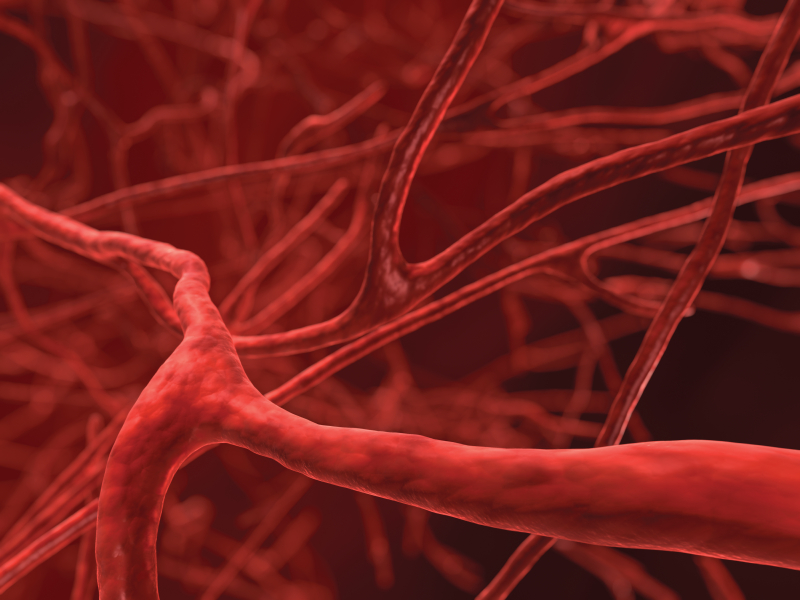Blood Plasma is Not So Normal
The large number of bulky, sticky cells in blood has complex effects on blood flow, but researchers have thought that the liquid portion of blood (called plasma) was an ordinary fluid. Now experiments described in Physical Review Letters show that even plasma is slightly springy, like a solid, and therefore not ordinary. This so-called elasticity of plasma could be important for modeling blood flow in the tiniest vessels and for developing substitutes that precisely match blood’s properties.
Imagine sandwiching a viscous fluid between two horizontal disks and rotating the top one. The force (or torque) needed to steadily rotate the disk tells you the viscosity, but if you let go, you can learn about the fluid’s elasticity, or springiness, a property we usually associate with solids. If the disk rotates back a bit on its own, then it has elasticity in addition to viscosity. Whole blood has complex flow properties thanks to red blood cells, which comprise almost half its volume. But for decades researchers have thought that blood plasma was just a simple fluid, says Christian Wagner of the University of the Saarland in Saarbrücken, Germany.
Wagner says the reason that earlier experiments using the two-disk-sandwich technique showed no elasticity is that they did not stretch the fluid very much. To magnify the effect, he and his colleagues instead used an apparatus in which they slowly pulled two plates apart to stretch the plasma, much as you can stretch a drop of saliva between your thumb and fingertip. In this configuration, a viscoelastic fluid forms a thin filament, but pure water does not. The team found they could make filaments this way, both in real plasma and in a synthetic version made by adding polymers to water. They then used video recording to measure the diameter of the filament and how it changed over time to quantify the elasticity. The team also observed tiny beads forming along the filament, as expected for an elastic fluid. The elasticity presumably arises because plasma proteins tend to return to their original shape after their chainlike molecules are stretched by the flow.
Some previous experiments have seen hints of elasticity in plasma, but these were always attributed to effects of proteins migrating to the surface of the fluid, where they were thought to create a surface layer, Wagner says. He and his colleagues tried to rule out this possibility by, for example, adding chemicals that would break up such a surface layer. In addition, team members led by Paulo Arratia at the University of Pennsylvania in Philadelphia found evidence for elasticity in the pressure needed to force plasma through a pipe that was about microns wide. This technique eliminates the free liquid surface, Wagner says, and “the take-home message of both [elasticity-measuring techniques] is very similar.”
Although “the flow of whole blood is determined to a large extent by the red blood cells,” a complete description must still include the properties of the plasma, Wagner says. For example, an ordinary fluid like water develops vortices downstream of an obstacle, such as a rock in a fast-flowing creek. But a viscoelastic fluid can develop vortices upstream of the obstacle, which in blood vessels could be a constriction, such as a blockage or a stent. Such eddies can affect clot formation near the constriction.
Until now, “most people would say blood is inelastic,” says Manuel Alves of the University of Porto, Portugal. The small elasticity was “very difficult to measure with this technique,” and the methods to do it have only been developed in the last few years, he says. The effect should get bigger for smaller channels, though, so it should be especially important for the tiniest blood vessels, especially where a vessel splits into two smaller ones. Mimicking these effects could be important in synthetic substitutes for blood, a technology that researchers are developing, Alves says.
–Don Monroe
Don Monroe is a freelance science writer in Murray Hill, New Jersey.





